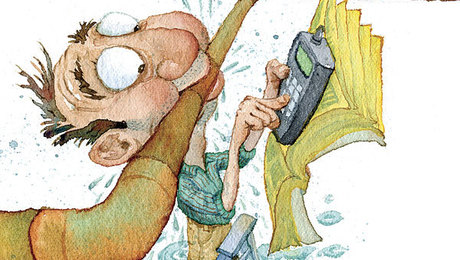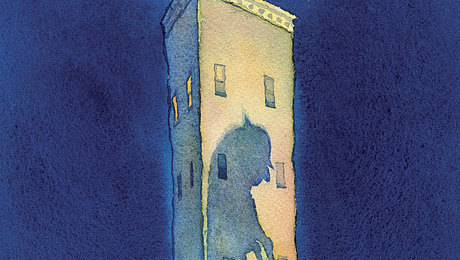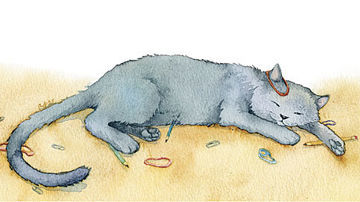Requiem for an Old House
Great moments in building history: The history of a house
Recently, I observed two men using heavy equipment to tear down an old house. They took about eight hours to dismantle, crush and haul off a structure that had stood since the first World War.
Being a lover of old houses, I felt ambivalent as I watched the Link-Belt LS 3400 excavator—basically a giant tractor-treaded backhoe—roar and stab its bucket through the roof, yanking down one side of the house in a deafening shower of splintered old-growth lumber from the virgin forests of East Texas. When those trees had first started to grow, our town wasn’t even a gleam in founder Henry Sanborn’s eye.
What is it about destruction that fascinates us? That house-wrecking drew a small crowd, mostly men, who idly exchanged pleasantries as if only half-interested in the demolition. But we looked up eagerly each time the wreckers tore off another chunk. One man had brought a water jug, and he sat in the shade with his legs crossed. Another drove up in a new German car, got out and stood with arms folded across his chest as if officially summoned to witness the death of the old house.
I once built things for a living, and I know the joy that comes from constructing something durable and useful. No doubt the carpenters who assembled that house, all long since gone, swelled with pride as they stood—perhaps where I myself stood—to examine their handiwork. It was a well-built bungalow, surely among the finest in our young city in its day.
There is also a joy that attends destruction, as any child can attest. I felt a curious thrill watching the excavator’s bucket, tipped with four animal-like claws, reach under a corner of the floor and lift the dining room several feet into the air. Fine old oak flooring, laid in a pleasing, interlocked pattern, flew with a wonderful ripping sound in every direction. Angry hornets, the home’s final occupants, circled in confusion and struck vainly at their iron-hearted, diesel-breathing adversary.
Earlier, I had investigated buying the house and moving it to another location. Additions to the original house resulted in a patchwork of foundations: slab, pier-and-beam and basement, which would have proved difficult to jack up. Even if I could have gotten wheels under the house, the four masonry fireplaces, each with a separate brick chimney, would have made moving it prohibitively expensive. Doors, fixtures and trim were salvaged by neighbors and passersby. The rest was destined for the landfill. A wanton, wasteful lot, we humans.
As I stood watching the bungalow being torn asunder, I wondered if the other men present also entertained fleeting images of its past. How many Thanksgiving dinners had the dining room beheld? How many Christmas mornings? What was the mood when the stock market crashed in 29? How did they celebrate V-E day? Did salt from their tears still lay in the flooring from November of 63? Whatever became of the children raised there? Maybe one of them was standing there with me. Or is reading this now.
Splintered pieces of the house were piled up, crushed down and loaded onto trucks for the one-way trip to the city dump. Cracked commodes, rough-sawn lath, ruined lumber, soldered lead waste pipe—all tamped violently into a mountain of rubble by the whining, snorting excavator. Old knob-and-tube wiring trailed from the bucket’s teeth like slobber from the maw of a great mechanical predator.
The wreckers worked with casual efficiency. Long timbers that would have proved difficult to load into the coffin-shaped truck beds were pinned against the rubble and snapped in two. One particular 6×6 post gave the operator trouble. I held my breath and silently rooted for the lumber until, after several attempts, the man at the controls managed to lay it across the foundation and crack it in half.
Gradually, more and more ancient prairie soil under the house was exposed to daylight. Woodrow Wilson lived in the White House when the sun last warmed that soil. In those days nothing was wasted, as evidenced by the old nail kegs full of concrete supporting the floor beams.
Toward day’s end, as the final piece of roof and attic crashed into the basement, a choking of gray-brown dust billowed furiously into the slanting afternoon sunlight, temporarily obscuring the workers and equipment. I recognized that dust. I’ve seen it before in old houses. It was spawned in the great and terrible storms of the Depression, driven ahead of northers, rolling down the Great Plains and striking dread in the hearts of those it enveloped, finally settling 2 in. deep in gardens, attics and window frames.
Now, set free after all these years, it rose like some dun phantom, like the house’s own powdery soul, mounting the sky, drifting north toward home.
—David T. Horsley, Amarillo, Texas
Fine Homebuilding Recommended Products
Fine Homebuilding receives a commission for items purchased through links on this site, including Amazon Associates and other affiliate advertising programs.

Affordable IR Camera

Handy Heat Gun

Reliable Crimp Connectors


























